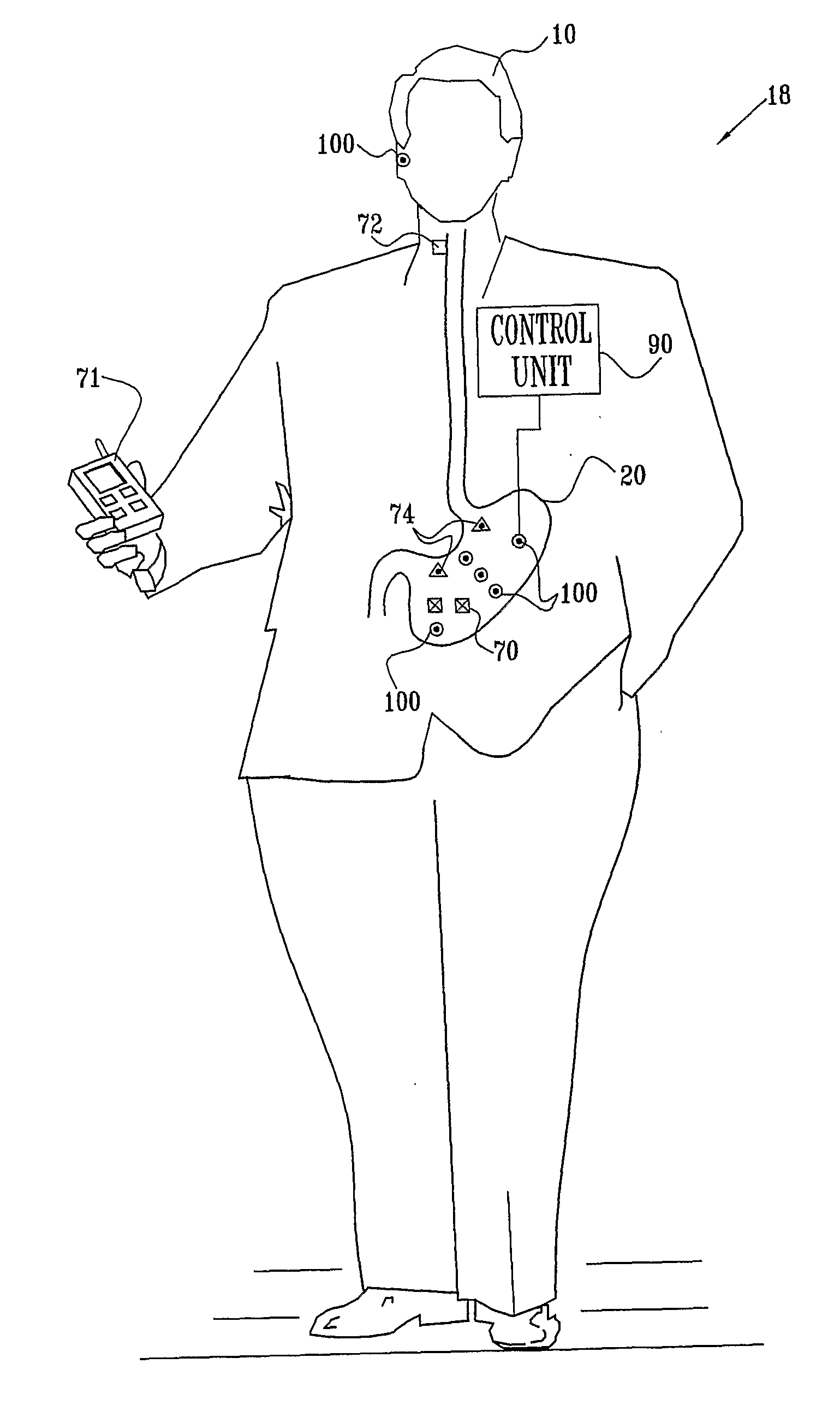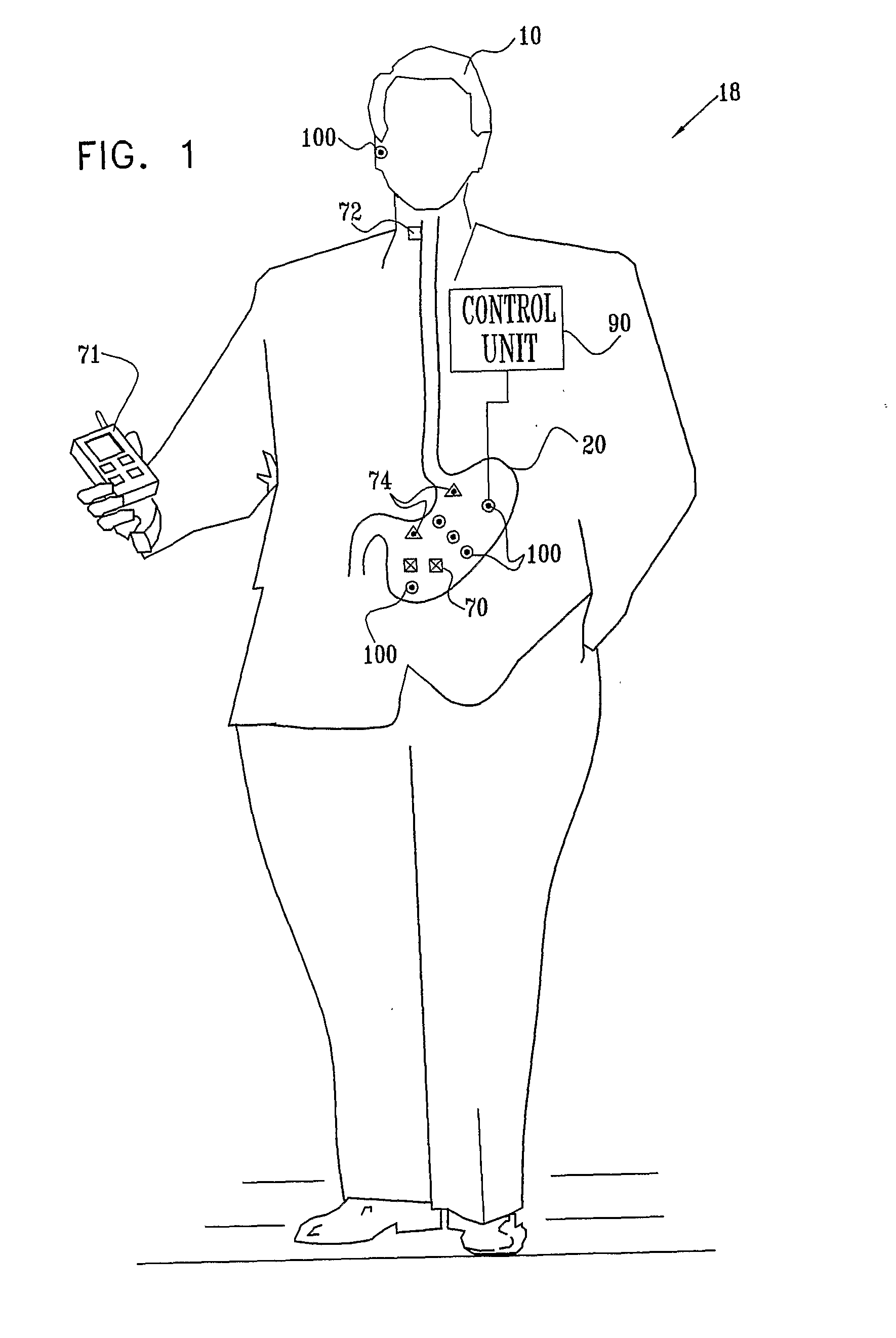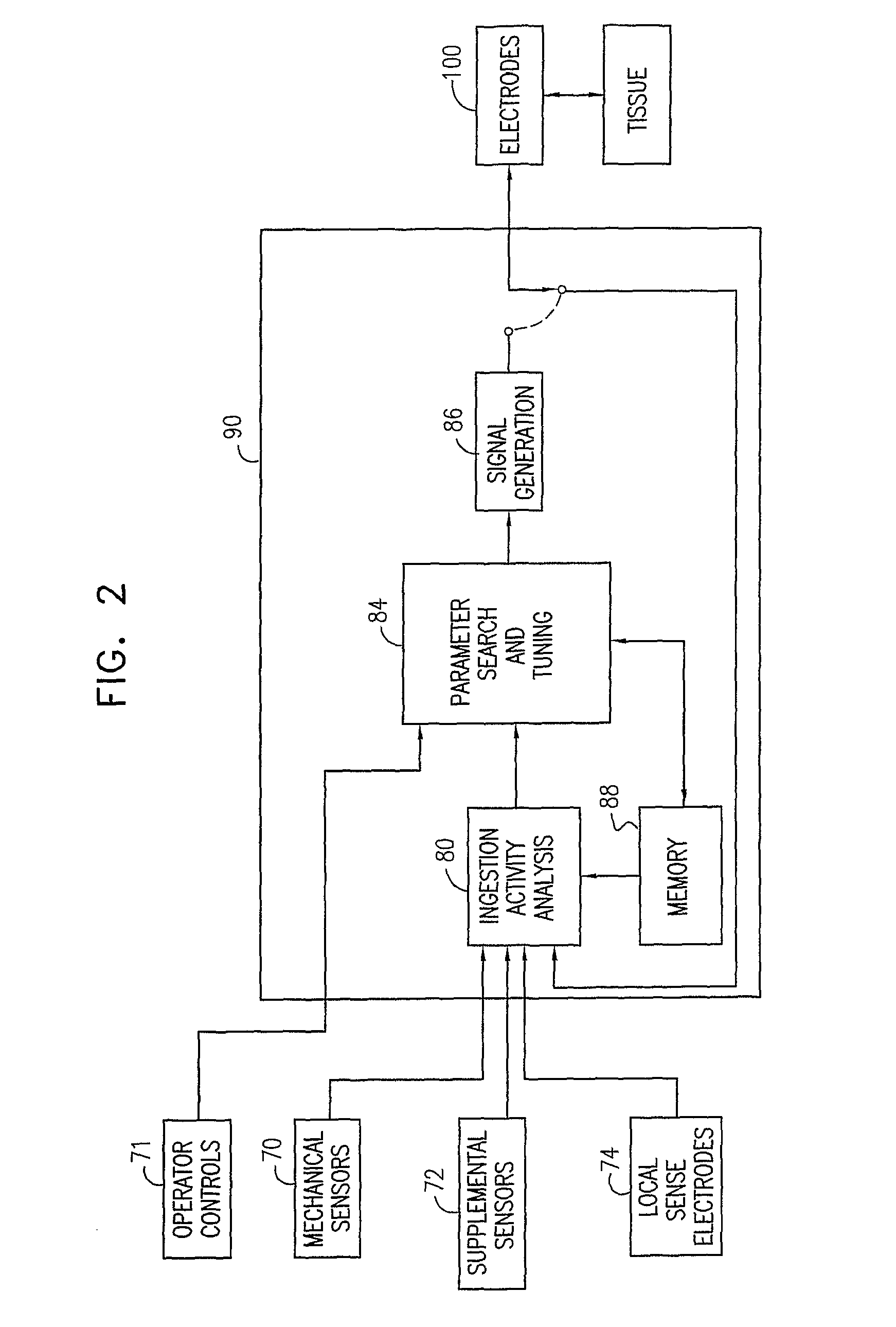[0025]It is yet a further object of some aspects of the present invention to provide apparatus and methods that enable the implementation of changes in food
ingestion habits in a predictable and controlled manner.
[0036]Alternatively or additionally, the control unit is adapted to change one or more of the threshold values in response to a physiological event that has a tendency to cause false indications of eating activity. For example, a phenomenon known as the migrating motor complex (MMC) is characterized by a change in
rhythm of antral electrical activity. This change in antral electrical activity is largely unrelated to eating, but can lead to false indications of eating activity. Since MMC activity lasts about 10 minutes and appears in a cyclical manner with a period of about 40 minutes, the control unit is adapted to identify MMC activity and respond, such that false positive identifications of eating activity are reduced. For example, when a change in antral electrical activity is detected, which may be indicative of eating, the control unit examines data on antral electrical activity from 30 to 50 minutes prior thereto, searching for similar activity that may be indicative of MMC activity. If the current activity is likely to be related to MMC activity, then the fundic threshold level signifying an eating event is increased during the subsequent times that are between 30 and 50 minutes in the future (i.e., when subsequent MMC activity is expected), thus reducing the likelihood of false positives relating to MMC contractions. As appropriate, other periodic physiological activities of the
gastrointestinal system are treated in a similar manner. It is to be understood that the period of the MMC activity is described herein as being between 30 and 50 minutes by way of illustration and not limitation. In some patients, the period of the MMC activity may be higher, e.g., 50 to 90 minutes, or 90 to 120 minutes. For some applications, a calibration period is provided to determine the length of the period for each patient.
[0042]Alternatively or additionally, the
ingestion-
control signal is configured so as to induce a feeling of satiation, typically but not necessarily in accordance with methods described in U.S.
patent application Ser. No. 09 / 734,358, entitled, “Acute and chronic electrical
signal therapy for
obesity,” filed on Dec. 21, 2000, which is assigned to the assignee of the present
patent application and is incorporated herein by reference. For example, methods described in that application for engendering a feeling of satiation may be applied in conjunction with embodiments of the present invention, such that muscles in the vicinity of stretch receptors in the
stomach are caused to contract, thereby resulting in decreased hunger sensations. Alternatively or additionally, the feeling of satiation is induced by applying electrical signals which enhance the mobility of chyme from the fundus to the
antrum of the
stomach, where stretch-
receptor signals are generally generated to a greater extent for a given quantity of food than in the fundus.
[0074]In an embodiment, the control unit is adapted to drive the current-application
electrode set to apply an Excitable-Tissue Control (ETC)
signal to the tissue. For example, the control unit may be adapted to drive the current-application
electrode set to apply a stimulatory pulse at
a site of application of the ETC
signal. Alternatively or additionally, the control unit is adapted to drive the current-application
electrode set to apply a stimulatory pulse to tissue at
a site other than
a site of application of the ETC signal. Still further alternatively or additionally, the control unit is adapted to drive the current-application electrode set to apply the ETC signal in order to increase an aspect of contraction of the tissue. For some applications, the control unit is adapted to drive the current-application electrode set to apply the ETC signal in order to cause tissue contraction in a first portion of the
stomach of the subject, and stretching of a stretch
receptor of the stomach in a second portion of the stomach. Alternatively or additionally, the control unit is adapted to drive the current-application electrode set to apply the ETC signal in order to increase a contraction strength of tissue in a vicinity of a stretch
receptor of the stomach of the subject, so as to increase a
sensation of satiation of the subject. Further alternatively or additionally, the control unit is adapted to drive the current-application electrode set to apply the ETC signal to the tissue so as to enhance movement of chyme from a fundus to the
antrum of the stomach of the subject.
 Login to View More
Login to View More  Login to View More
Login to View More 


